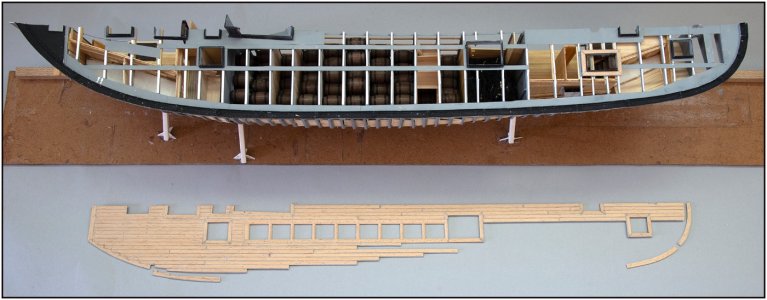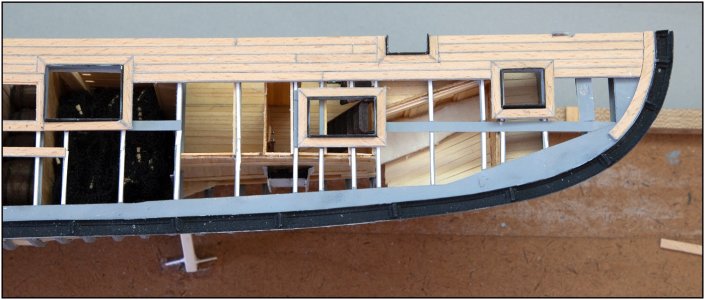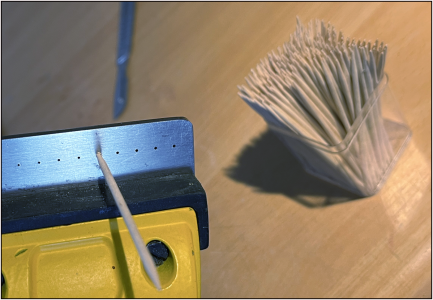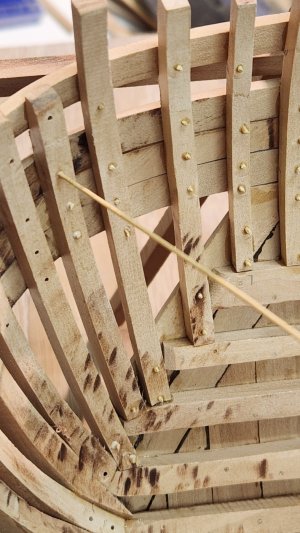…..fantastic work Peter. It always amazes me how clean and precise your work is. Cheers Grant
-

Win a Free Custom Engraved Brass Coin!!!
As a way to introduce our brass coins to the community, we will raffle off a free coin during the month of August. Follow link ABOVE for instructions for entering.
You are using an out of date browser. It may not display this or other websites correctly.
You should upgrade or use an alternative browser.
You should upgrade or use an alternative browser.
BALDER, Vlaardingen Herring Lugger from 1912, scratch build scale 1:50 Plate-On-Frame
- Thread starter Peter Voogt
- Start date
- Watchers 63
Th…. Th…. Th….. Thanks, GrantGood morning Peter. What they all say or ditto,ditto, ditto and ditto
Thanks, Grant. For the most it’s ‘time’, ‘measuring’, ‘tools’ and ‘minor adjustment’ each time. Those inseparably linked to the each other. Most definitely the 4th with the 1st.…..fantastic work Peter. It always amazes me how clean and precise your work is. Cheers Grant
Regards, Peter
A small update to record the progress of the 'off-deck decking'. The sheet can still be removed.

And put back where all deck openings ensure that it's no longer shifts:

At the front, the 1st nibble plank is also glued. With the transition to the 2nd part. There are now 5 complete strokes up to the back.
After the 3 frames around the deck openings, there are now 4 towards the aft deck:

In the curve at the back, the first 7 planks are sawn off in the curve. Then they are also nibbled.
I am now going to lay complete strokes on the back, after which the connections with the middle follow. And I can fill the middle piece up to the side.
Regards, Peter

And put back where all deck openings ensure that it's no longer shifts:

At the front, the 1st nibble plank is also glued. With the transition to the 2nd part. There are now 5 complete strokes up to the back.
After the 3 frames around the deck openings, there are now 4 towards the aft deck:

In the curve at the back, the first 7 planks are sawn off in the curve. Then they are also nibbled.
I am now going to lay complete strokes on the back, after which the connections with the middle follow. And I can fill the middle piece up to the side.
Regards, Peter
Wonderful, meticulous work, Peter!
Thanks, Paul. A few planks a day, makes a deck sheet in a …….. month (or two) …..Wonderful, meticulous work, Peter!
Regards, Peter
Last edited:
Truly outstanding work, Peter. Your attention to detail and precision are both impressive and inspiring.
indlela entle kakhulu….Peter.A small update to record the progress of the 'off-deck decking'. The sheet can still be removed.
View attachment 516532
And put back where all deck openings ensure that it's no longer shifts:
View attachment 516533
At the front, the 1st nibble plank is also glued. With the transition to the 2nd part. There are now 5 complete strokes up to the back.
After the 3 frames around the deck openings, there are now 4 towards the aft deck:
View attachment 516534
In the curve at the back, the first 7 planks are sawn off in the curve. Then they are also nibbled.
I am now going to lay complete strokes on the back, after which the connections with the middle follow. And I can fill the middle piece up to the side.
Regards, Peter
I need to get the translation app out, Grant. But I'm definitely on my way to a complete deck.indlela entle kakhulu….Peter.
PS: I'm just reading the series of books by Deon Meyer. About Benny Griessel, who works at De Valken / the Hawks Team of the SAPS. In those books also a lot of Xhosa!
Regards, Peter
Last edited:
Hi Peter. It is Xhosa. I have read all the Deon Meyer books except his latest one Leo - also a Benny Griessel story. I got a signed copy for Christmas from the Admiral. He is my favorite author although I’m a little bit biased as he is South African and he rides bikes (a BMW unfortunatelyI need to get the translation app out, Grant. But I'm definitely on my way to a complete deck.
PS: I'm just reading the series of books by Deon Meyer. About Benny Griessel, who works at De Valken / the Hawks Team of the SAPS. In those books also a lot of Xhosa!
Regards, Peter
 ) as well. Enjoy. Cheers Grant
) as well. Enjoy. Cheers GrantBeautiful work Peter! Will the deck remain removable or is that just while you build it?
You have every right to be ‘biased’, Grant. And so you see, we have a lot in common: longitude degree, ship models, bikes (mountain/motor), (Scottish) Whisky, author with the (only) right choice for a BMW …..Hi Peter. It is Xhosa. I have read all the Deon Meyer books except his latest one Leo - also a Benny Griessel story. I got a signed copy for Christmas from the Admiral. He is my favorite author although I’m a little bit biased as he is South African and he rides bikes (a BMW unfortunately) as well. Enjoy. Cheers Grant

Next Monday out for a 4 days trip with my bike mate.
Regards, Peter
Last edited:
Thanks, Dean. It’s just during the build. I can now press the planks against each other and straight against a steel ruler, upside down to be sure it’s flat, drill the holes for the plugs under the drill press, sand it flat on my workbench. At the end I glue it as a sheet and hopefully with a nice flow of the sheer and deck rounding. Because I now feel that the sheet has flexibility in it. After sanding it will be +\- 1 mm thick.Beautiful work Peter! Will the deck remain removable or is that just while you build it?
Regards, Peter
Thanks, Jim. Who knows I see some other off-deck decking’s in future build-log’s ……. Just measuring in/on the model and the rest on the workbench. Much easier.Truly outstanding work, Peter. Your attention to detail and precision are both impressive and inspiring.
Regards, Peter
- Joined
- Oct 28, 2018
- Messages
- 760
- Points
- 403

The Dutch Masters
What do we mean by Dutch Masters?
The term “Dutch Masters” was once chosen because the name well reflects the greatness and exceptional talent of these artists.
It emphasizes their unparalleled mastery and their impact on art history.
Greatness and exceptional talent is shown here
Incidentally, the term 'old masters' is also sometimes used.
Regards
Henk
What do we mean by Dutch Masters?
The term “Dutch Masters” was once chosen because the name well reflects the greatness and exceptional talent of these artists.
It emphasizes their unparalleled mastery and their impact on art history.
Greatness and exceptional talent is shown here
Incidentally, the term 'old masters' is also sometimes used.
Regards
Henk
Thanks for the compliments, Allan. I made the 'plugs' with the regular toothpicks from the supermarket. I also did a test with increasingly thinner strips of beech from the boards, but to get them step by step through the desired opening of the DrawPlate .....VERY nice work! Lots of things to like, but one that I noticed in the last photos is the subtlety of the deck nails/plugs. What material did you use for these faux nails? They look really good.
Allan

In the opening '31' they just fit with a little friction in the 0.6 mm holes. And they keep their point during the making which makes inserting in the holes easier.
I did the same on the hull and deck planking of my Bluenose and was very and was very satisfied with the end result after 2 layers of linseed oil.
Regards, Peter
Last edited:
I have yet to try toothpicks but I know it is popular. I do use my drawplate with the progressive holes down to 0.016 with bamboo as I can make fifty or one hundred with one small bamboo skewer that I split into a dozen strips and cut into individual treenails. If you have not already seen it, the following may be interesting as your method is shown as well as others. https://shipsofscale.com/sosforums/threads/tricks-of-the-trade.15492/page-2 post #25
Allan
Allan
Yes, I saw your post, Allen. And posted my method right after (#26). It works great for me and I don't have to strip and cut.I have yet to try toothpicks but I know it is popular. I do use my drawplate with the progressive holes down to 0.016 with bamboo as I can make fifty or one hundred with one small bamboo skewer that I split into a dozen strips and cut into individual treenails. If you have not already seen it, the following may be interesting as your method is shown as well as others. https://shipsofscale.com/sosforums/threads/tricks-of-the-trade.15492/page-2 post #25
Allan
Ps: I would not recommend the 1st method shown with the unprocessed toothpicks. If you turn or push the slanted point into the drilled holes, those holes will be widened and the end result will be larger than desired. Unless that has been calculated and the holes have been drilled smaller in advance. Then you have to hope that the hardness of all the planks is the same.
In my case with that method: the 0,6 mm could be widened to 0,7 mm. It’s just 0,1 mm …… but a increase of 15%.
Regards, Peter
Last edited:
Great work again Peter. Do you use beech or bamboo toothpicks.
I prefer the beech as the bamboo is very porous.
At the moment I use some hardwood I got from my parquetterie specialist many years ago. It has a very straight grain and is ideal for treenails. You can easily make 30 cm long 0,6 mm treenail lengths.
Unfortunately he could tell me anymore what it was as it was very old stock.

You can take some if you want in July.
I prefer the beech as the bamboo is very porous.
At the moment I use some hardwood I got from my parquetterie specialist many years ago. It has a very straight grain and is ideal for treenails. You can easily make 30 cm long 0,6 mm treenail lengths.
Unfortunately he could tell me anymore what it was as it was very old stock.

You can take some if you want in July.



